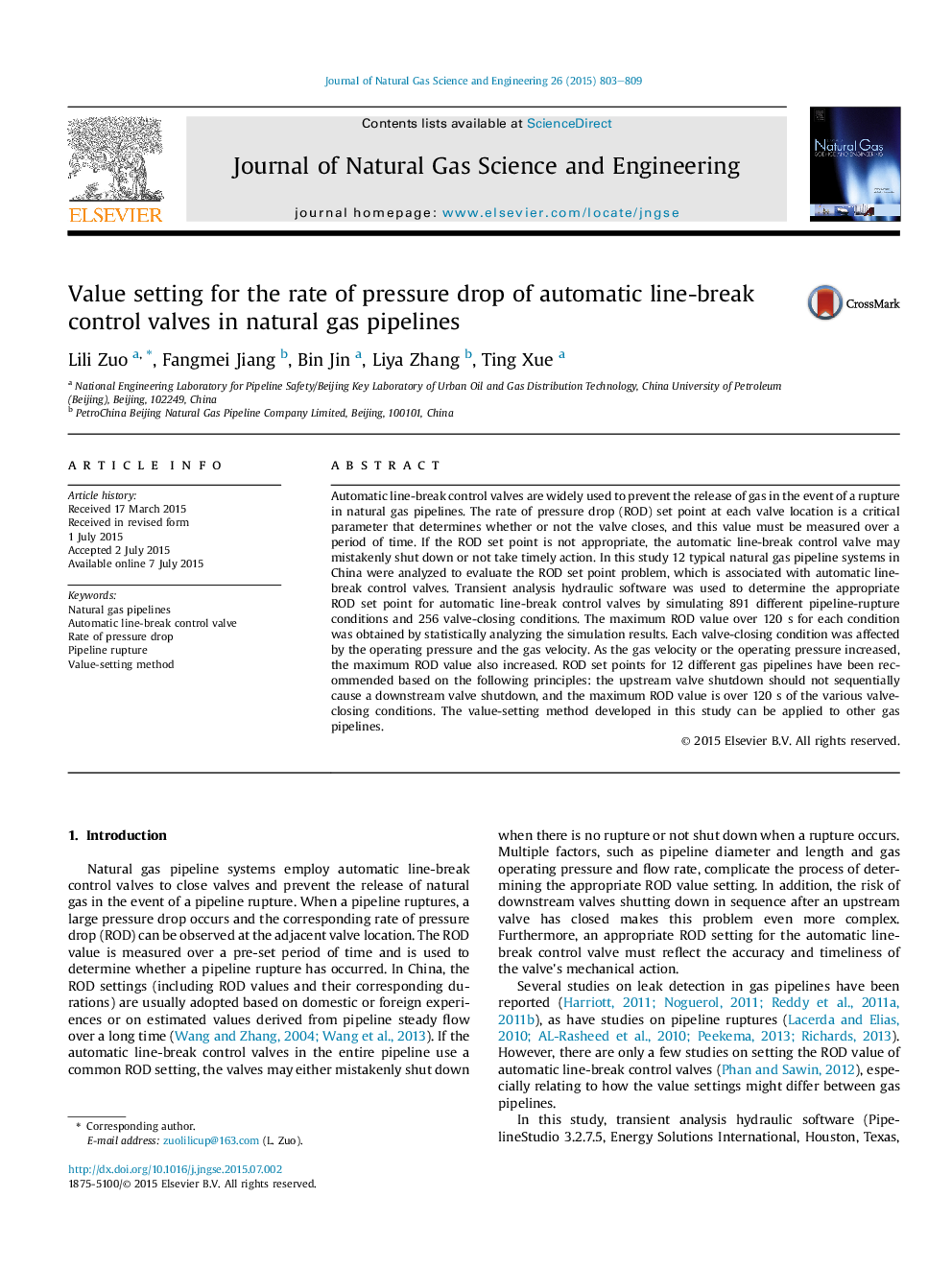| Article ID | Journal | Published Year | Pages | File Type |
|---|---|---|---|---|
| 1757572 | Journal of Natural Gas Science and Engineering | 2015 | 7 Pages |
•Rate of pressure drop (ROD) at automatic line-break control valves was studied.•891 line-rupture conditions and 256 valve-closing conditions were simulated.•Maximum ROD values depend on rupture diameter, operating pressure, gas velocity, and valve spacing.•Maximum ROD values due to upstream valve closures are predictable.•Design equations for setting ROD values in actual pipelines are presented.
Automatic line-break control valves are widely used to prevent the release of gas in the event of a rupture in natural gas pipelines. The rate of pressure drop (ROD) set point at each valve location is a critical parameter that determines whether or not the valve closes, and this value must be measured over a period of time. If the ROD set point is not appropriate, the automatic line-break control valve may mistakenly shut down or not take timely action. In this study 12 typical natural gas pipeline systems in China were analyzed to evaluate the ROD set point problem, which is associated with automatic line-break control valves. Transient analysis hydraulic software was used to determine the appropriate ROD set point for automatic line-break control valves by simulating 891 different pipeline-rupture conditions and 256 valve-closing conditions. The maximum ROD value over 120 s for each condition was obtained by statistically analyzing the simulation results. Each valve-closing condition was affected by the operating pressure and the gas velocity. As the gas velocity or the operating pressure increased, the maximum ROD value also increased. ROD set points for 12 different gas pipelines have been recommended based on the following principles: the upstream valve shutdown should not sequentially cause a downstream valve shutdown, and the maximum ROD value is over 120 s of the various valve-closing conditions. The value-setting method developed in this study can be applied to other gas pipelines.
